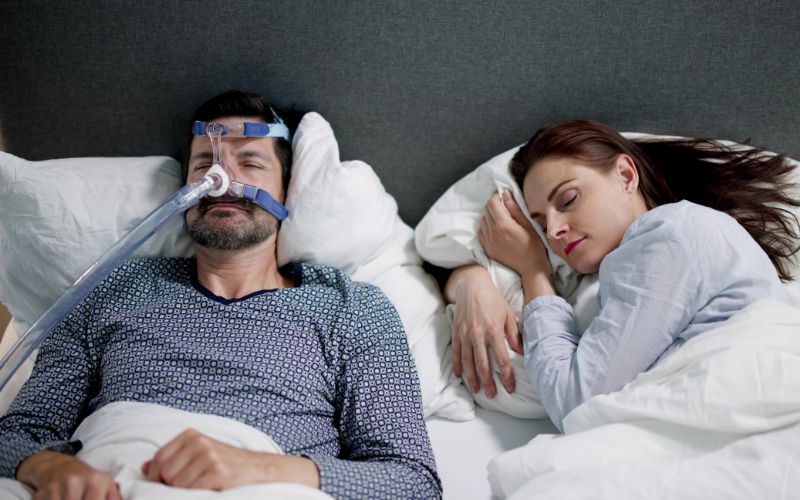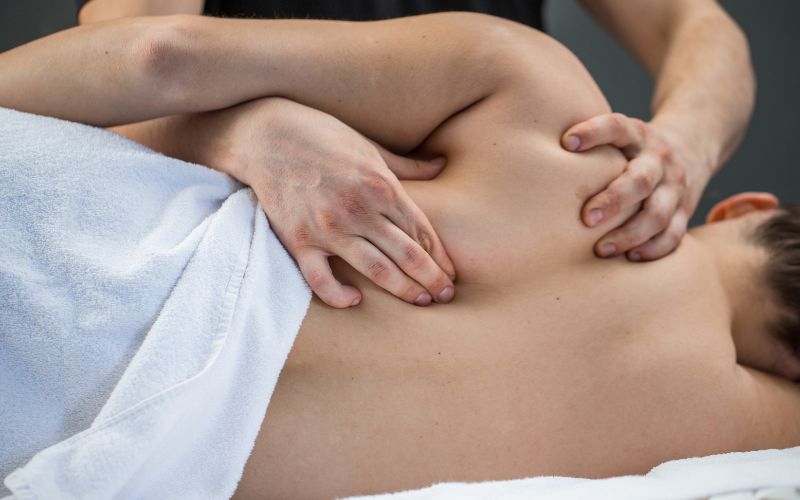
If you’re one of the millions struggling with sleep apnea or insomnia, you’ve likely been told that a CPAP machine is your only solution. You have to wonder, is that really all we have? The other interesting fact is that only 20% of all persons with sleep apnea are even diagnosed. This means that a large chunk of our population struggles through the night and has become very discouraged. Is that you?
The point is: not getting adequate rest is a destructive force that can tarnish our life expectancy and greatly diminish our quality of life and what we are able achieve. While CPAP therapy remains the gold standard for treating obstructive sleep apnea, emerging research reveals something remarkable: targeted breathwork for sleep apnea can significantly enhance your treatment outcomes and, in some cases, reduce the severity of your condition naturally.
This isn’t just ancient wisdom meeting modern medicine. The practice has science-backed evidence showing that specific breathing techniques for sleep apnea can reshape how you breathe, sleep, and live.
Sleep isn’t something you can do once you’re dead. Sleep is the basis of health and wellness our life vitality. It will determine your success in work, family and anything else you set out to accomplish.
Recent research has fundamentally changed our understanding of how breathing retraining affects sleep-disordered breathing. A comprehensive review published in Sleep and Breathing examined multiple approaches to breathing retraining in sleep apnea, revealing that targeted respiratory exercises can improve upper airway stability, reduce apnea episodes, and enhance overall sleep quality.
The mechanisms are fascinating: when you practice specific breathing techniques for sleep apnea during the day, you’re actually retraining the muscles that control your airway. This includes strengthening the diaphragm, improving tongue posture, and enhancing the coordination between your breathing muscles and upper airway structures.
Yes, you got that right – you can train your body to perform deeper sleep restoration for greater periods of time, thus rewarding you through one of the most profound ways possible.
Research has shown that the way you breathe during waking hours directly impacts your sleep breathing patterns. Studies examining upper airway resistance syndrome found that daytime breathing dysfunction creates a cascade of nighttime problems, including increased airway collapse and fragmented sleep.
The critical insight? Your daytime breathing is practice for your nighttime breathing. Therefore, every breath you take while awake is either reinforcing healthy airway patterns or perpetuating the dysfunction that contributes to sleep apnea.
The way you train is the way you live. Train smart and live intentionally.
One of the most powerful discoveries in sleep apnea research is the critical importance of nasal breathing. A landmark study published in the Journal of Laryngology and Otology by Dr. Peretz Lavie emphasized that “shut your mouth and save your sleep” isn’t just catchy advice -it’s scientifically sound and an absolute necessity.
Research using 3D MDCT analysis has shown that open-mouth breathing significantly reduces upper airway space in people with obstructive sleep apnea. The implications are profound: training yourself to breathe through your nose can literally reshape your airway dynamics.
The Nasal Breathing Protocol:
Practice conscious nasal breathing during all daily activities
Use gentle mouth taping during sleep (under medical supervision -tell your doctor)
Perform nasal breathing exercises to strengthen the habit
Address any nasal congestion that prevents optimal nasal airflow
Multiple studies have demonstrated the remarkable effectiveness of oropharyngeal exercises. These are targeted movements that strengthen the muscles around your throat and tongue. Research published in the American Journal of Respiratory and Critical Care Medicine showed that patients with moderate obstructive sleep apnea who performed these exercises experienced significant improvements in their condition.
A follow-up study published in Sleep and Breathing found that oropharyngeal exercises continued to reduce OSA symptoms even after adenotonsillectomy, suggesting these techniques address fundamental muscle coordination issues.
Key Oropharyngeal Exercises:
Tongue strengthening movements
Soft palate elevation exercises
Lateral pharyngeal wall strengthening
Coordinated swallowing patterns
The Buteyko Clinic International has documented significant success using breathing retraining specifically designed for sleep apnea sufferers. Their approach focuses on reducing overbreathing and optimizing carbon dioxide levels, which research suggests can improve sleep quality and reduce apnea episodes.
The Buteyko Institute of Breathing and Health has published case studies showing that their breathing retraining methods can lead to measurable improvements in sleep apnea severity. The technique emphasizes gentle, controlled breathing that maintains optimal CO2 levels and reduces the hyperventilation patterns often seen in sleep apnea patients.
Groundbreaking research published in Sleep Medicine highlighted the critical role of myofascial reeducation in pediatric sleep-disordered breathing. While this study focused on children, the principles apply to adults: the facial muscles, jaw positioning, and overall oral-facial development play crucial roles in airway stability.
This research suggests that comprehensive breathwork for sleep apnea must address not just breathing patterns, but the entire structural foundation of your airway.

What makes breathwork for sleep apnea truly powerful is its integration with conventional medical treatment. Research consistently shows that breathing techniques for sleep apnea work synergistically with CPAP therapy, often leading to:
Improved CPAP compliance and comfort
Reduced pressure requirements
Better sleep quality even with CPAP use
Enhanced daytime energy and cognitive function
Better relationships and communication with loved ones
Fascinating research published in Sleep Disorders revealed a significant relationship between asthma control and obstructive sleep apnea in older adults. This connection highlights how comprehensive respiratory health -addressing both sleep breathing and overall lung function- creates better outcomes than treating sleep apnea in isolation.
For many people, breathwork/breathing exercises for sleep apnea becomes part of a broader respiratory wellness strategy that improves multiple aspects of breathing health.
A systematic review published in Frontiers in Medicine examined the effect of breathing exercises on adults’ sleep quality, providing compelling evidence that targeted respiratory training can significantly improve sleep outcomes. The review analyzed multiple intervention studies and found consistent improvements in:
Sleep quality scores
Sleep onset time
Night awakening frequency
Overall sleep efficiency
Improved ability to relate and understand others
The researchers concluded that breathing exercises represent a safe, effective intervention that works alongside medical treatments to enhance sleep quality.
The research reveals something profound: while CPAP machines address the mechanical obstruction of sleep apnea, breathing techniques for sleep apnea address the underlying neuromuscular coordination issues that contribute to airway collapse.
This isn’t about replacing your CPAP, as Origins Unity never suggests going against good medical advice. Accordingly, the significance is about optimizing your entire respiratory system so that your medical treatment works more effectively and your overall health improves dramatically.
Research examining behavioral outcomes in children with sleep-disordered breathing found that early intervention can prevent long-term consequences. While this study focused on children, it underscores an important principle: the earlier you address breathing dysfunction, the better your outcomes.
As a result, this means that starting breathwork for sleep apnea -regardless of your age- can still produce significant improvements in your condition.
Don’t let your kids suffer unnecessarily. Give them a leg up on health and social stress.
Based on the research, here’s how to begin integrating evidence-based breathing techniques for sleep apnea into your treatment plan:
Establish consistent nasal breathing during waking hours
Begin basic diaphragmatic breathing exercises
Practice gentle oropharyngeal strengthening movements
Work with your healthcare provider to ensure medical optimization and holistic approach
Combine breathing techniques with your CPAP routine
Add more advanced oropharyngeal exercises
Focus on sleep positioning and environmental optimization
Monitor improvements in sleep quality and CPAP data
Develop advanced breathing coordination
Address any remaining muscle imbalances
Fine-tune your approach based on results
Consider working with a qualified breathing instructor
The evidence is clear: breathwork for sleep apnea isn’t alternative medicine -it’s complementary medicine backed by peer-reviewed research. Multiple studies across different populations and methodologies consistently show that targeted breathing techniques for sleep apnea can:
Reduce the severity of sleep-disordered breathing
Improve sleep quality and daytime function
Enhance the effectiveness of medical treatments
Provide a safe, natural approach to respiratory wellness
Bring people together and support stronger bonds between humans

The research emphasizes an important point: breathwork for sleep apnea works best when integrated with comprehensive medical care. Always discuss these techniques with your sleep medicine physician, especially if you’re considering modifications to your CPAP therapy or other treatments.
Many forward-thinking sleep doctors are now incorporating breathing retraining into their treatment protocols, recognizing that the combination of mechanical and physiological approaches provides superior outcomes to a standalone approach.
Every study reviewed here points to the same conclusion: how you breathe during the day profoundly impacts how you sleep at night. The breathing techniques for sleep apnea aren’t just exercises -they’re a pathway to reclaiming your sleep, your energy, and your life.
The research shows it’s possible. The techniques are available. The question isn’t whether breathwork for sleep apnea can help you, rather, it’s when do you want to start breathing your way to better sleep, happiness, and wellbeing?
Remember: This information is based on published research and is intended to complement, not replace, professional medical advice. Always consult with your healthcare provider before making changes to your sleep apnea treatment plan.
Frontiers | The effect of breathing exercises on adults’ sleep quality: an intervention that works
Birch, M. (2012). Sleep apnoea and breathing retraining, Buteyko Institute of Breathing and Health.
Bonuck, K., K. Freeman, R. D. Chervin and L. Xu (2012). “Sleep-disordered breathing in a population based cohort: behavioural outcomes at 4 and 7 years.” Pediatrics 129(4): 1-9.
Gold, A. R., F. Dipalo, M. S. Gold and D. O’Hearn (2003). “The symptoms and signs of upper airway resistance syndrome: a link to the functional somatic syndromes.” Chest 123(1): 87-95.
Guilleminault, C., Y. S. Huang, P. J. Monteyrol, R. Sato, S. Quo and C. H. Lin (2013). “Critical role of myofascial reeducation in pediatric sleep-disordered breathing.” Sleep Med 14(6): 518-525.
Guimarães, K. C., L. F. Drager, P. R. Genta, B. F. Marcondes and G. Lorenzi-Filho (2009). “Effects of oropharyngeal exercises on patients with moderate obstructive sleep apnea syndrome.” Am J Respir Crit Care Med 179(10): 962-966.
Kim, E. J., J. H. Choi, K. W. Kim, T. H. Kim, S. H. Lee, H. M. Lee, C. Shin, K. Y. Lee and S. H. Lee (2010). “The impacts of open-mouth breathing on upper airway space in obstructive sleep apnea: 3-D MDCT analysis.” Eur Arch Otorhinology Ahead of print.
Lavie, P. (1987). “Rediscovering the importance of nasal breathing during sleep or, shut your mouth and save your sleep.” J Laryngol Otol. 101(6): 558-563.
Teodorescu, M., D. A. Polomis, R. E. Gangnon, J. E. Fedie, F. B. Consens, R. D. Chervin and M. C. Teodorescu (2013). “Asthma Control and Its Relationship with Obstructive Sleep Apnea (OSA) in Older Adults.” Sleep Disord 2013: 251567.
Villa, M. P., L. Brasili, A. Ferretti, O. Vitelli, J. Rabasco, A. R. Mazzotta, N. Pietropaoli and S. Martella (2015). “Oropharyngeal exercises to reduce symptoms of OSA after AT.” Sleep Breath 19(1): 281-289.

Origins Unity LLC Gym Yoga Studio Meditation Center offers Holistic Health and Wellness Coaching, Corporate Wellness Programming, and more. We are Mental Health Advocates and aim to produce wellbeing through natural means. Our services are for individuals, groups, and companies.
